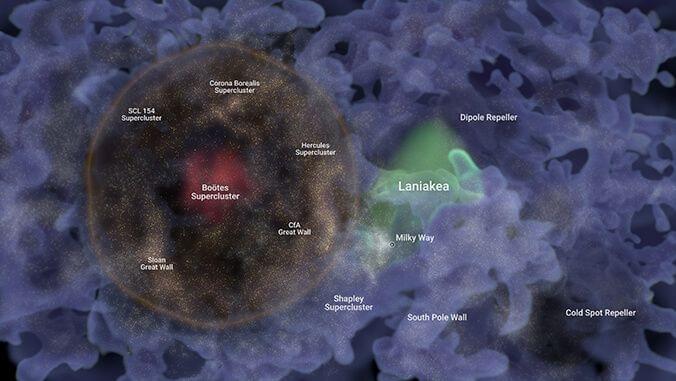The bubble itself is composed of previously identified structures that themselves have been considered some of the universe’s largest arrangements of matter. This includes several superclusters, or groups of galaxy clusters, that each contain 10 clusters and span up to 200 million light-years. At the heart of Ho’oleilana lies the Bootes supercluster and the Bootes void, which is a 330 million-light-year-wide space of nothingness.
Related: Galaxy shapes can help identify wrinkles in space caused by the Big Bang
“We were not looking for it. It is so huge that it spills to the edges of the sector of the sky that we were analyzing,” Brent Tully, study leader and an astronomer at the University of Hawaii, said in a statement. “As an enhancement in the density of galaxies, it is a much stronger feature than expected. The very large diameter of one billion light years is beyond theoretical expectations.”
